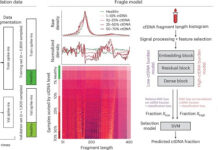The Parliamentary Standing Committee on Chemicals and Fertilisers has urged the Department of Pharmaceuticals (DoP) to develop a time-bound action plan to expand the Jan Aushadhi Kendra (JAK) network across India. The panel emphasized the need for every district to have an adequate number of these affordable medicine outlets.
Uneven Distribution Across the Country
In its Eighth Report on the Demands for Grants for 2025–26, the Committee pointed out that while the DoP had established approximately 15,000 JAKs as of January 31, 2025, their distribution remains uneven. This imbalance is especially stark in the Northeastern states and Union Territories.
With India’s population exceeding 1.4 billion, the current JAK-to-population ratio stands at one Kendra for every 93,000 people. The Committee expressed concern that this is insufficient to meet the healthcare demands of rural and underserved regions.
Call for Targeted Expansion
“The Committee finds no clear estimate of the actual number of Kendras required to serve the population effectively, particularly in geographically challenging and underserved areas,” said the panel, chaired by MP Kirti Jha Azad. “The absence of a comprehensive strategy for expanding JAKs in such regions calls for a more proactive approach by the Department,” Azad added.
Low Coverage in Specific Regions
A detailed review of state-wise data shows alarmingly low numbers of JAKs in several regions:
- Andaman & Nicobar: 9
- Ladakh: 2
- Lakshadweep: 1
- Manipur: 56
- Meghalaya: 25
- Mizoram: 15
- Nagaland: 22
- Sikkim: 12
- Tripura: 29
“Given the mission of providing affordable medicines to all, this distribution pattern demands urgent corrective measures,” the Committee stressed.
Strategic Planning and Stakeholder Consultation Recommended
In response to these concerns, the Committee recommended that the DoP initiate an immediate and well-structured expansion of the Jan Aushadhi Kendra network. The panel advised the Department to conduct feasibility studies, assess regional demands, and consult with key stakeholders to determine the optimal number and locations for new Kendras.
It further emphasized that the action plan should consider factors such as population density, existing healthcare infrastructure, and logistical challenges unique to each region.
Progress Made So Far
During oral submissions, the DoP informed the Committee that it has opened 7,443 Kendras between 2021–22 and January 2025. Notably, the Department launched 3,739 Kendras in just the first ten months of the current fiscal year, marking a significant push in expansion.
Involvement of Cooperative Societies in Rural Outreach
To boost the reach in remote and rural areas, the Department partnered with the Ministry of Cooperation. Together, they identified Primary Agricultural Credit Societies (PACS) and other cooperative societies as potential operators of new Kendras. As reported by pharmabiz.com, as of January 31, 2025, these cooperative networks have established 719 Kendras in underserved areas.
























